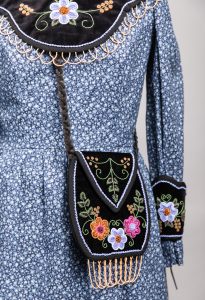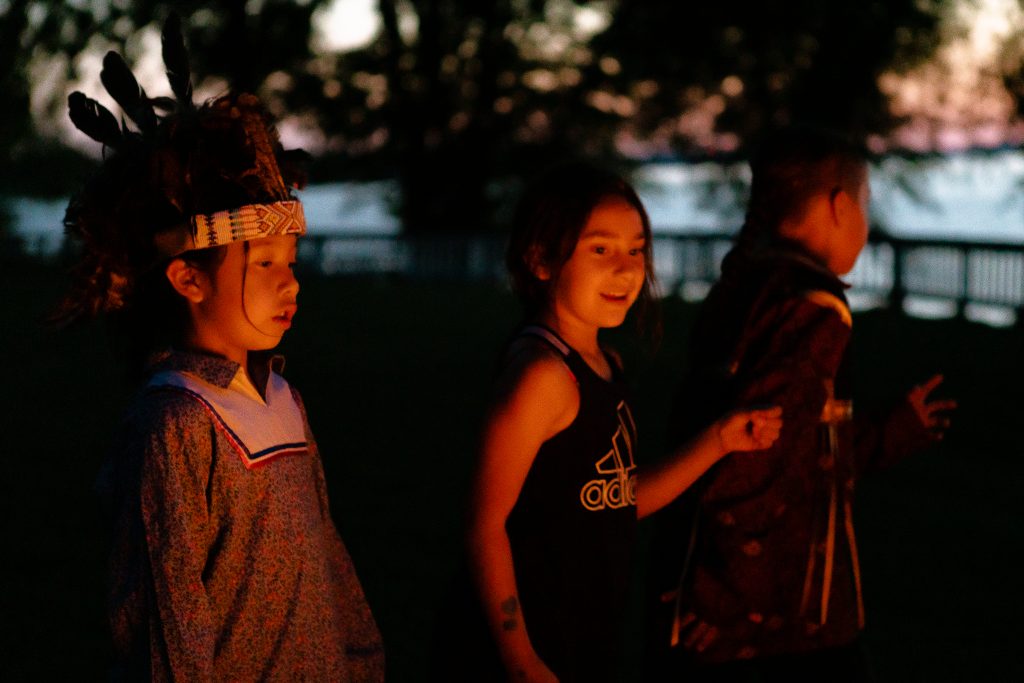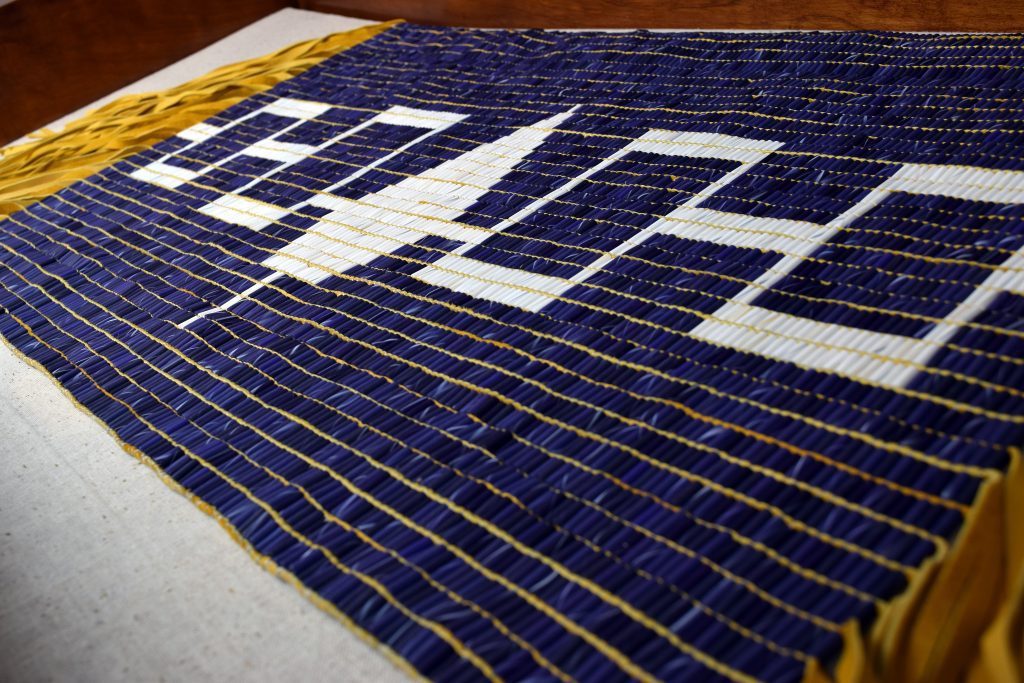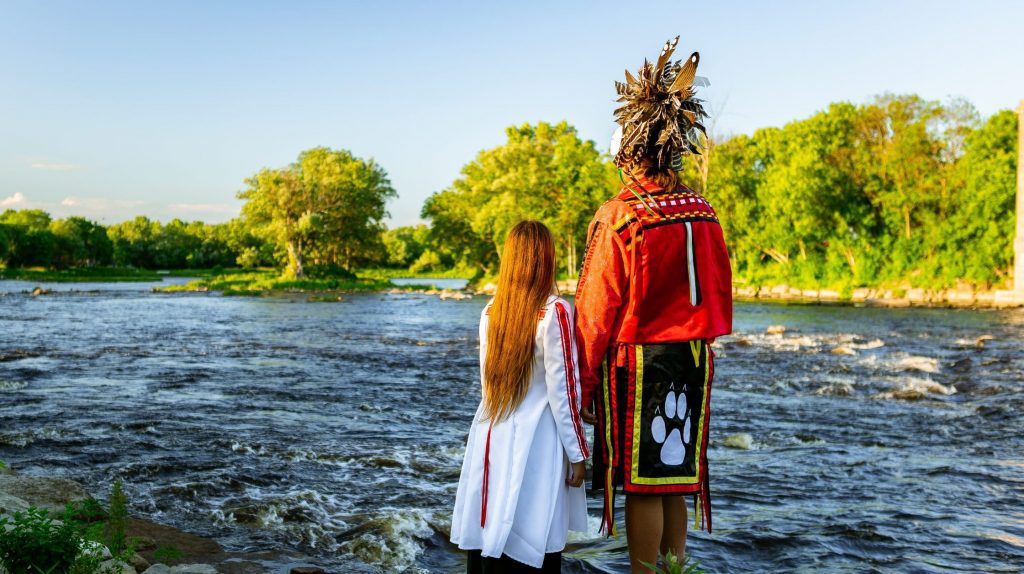Akwesasne is a Mohawk community along the St. Lawrence River, located where the Canadian provinces of Ontario and Quebec meet New York State. The Mohawk people are part of the Haudenosaunee, which means the “people of the longhouse.” The Haudenosaunee are often referred to as the Six Nations of the Iroquois Confederacy.
While the members of this alliance have some shared cultural traditions and history, each nation has its own identity and practices. As Mohawk or Kanien’kehaka, which means “people of the flint,” we play the role of the “keepers of the eastern door.” We are the easternmost nation of the Haudenosaunee and have a rich culture that has existed since time immemorial.
At Akwesasne, there is much diversity in traditions and beliefs. “Just because there is a longhouse belief system doesn’t mean that is the way of everyone here. This isn’t a static culture,” says Darren Bonaparte, Director of the Tribal Historic Preservation Office of Saint Regis Mohawk Tribe. Some of our residents practice the traditional Mohawk religion and belief systems, which we refer to as “Longhouse,” while other residents are Catholic, Protestant and other religions. All are part of our community’s collective history and culture.
For more on the Haudenosaunee, see this educational guide from the Smithsonian Museum of the American Indian. Strong efforts over many decades to revive Kanien’kéha, the Mohawk language, include traditional and public school programs, multi-generational educational initiatives, grassroots immersion activities and workshops. The Ahkwesahsne Mohawk Board of Education offers an immersion program and the Akwesasne Economic Development Agency (AEDA) created the first aboriginal multimedia language center in Ontario dedicated to preserving, protecting and revitalizing the local dialect of Mohawk. The Akwesasne Freedom School has a full Mohawk immersion program for grades pre-K through eight. The Saint Regis Mohawk Tribe offers community language courses and a language lab. Visitors to the St. Regis Mission Catholic Church will often hear hymns sung in Mohawk.
Common Mohawk words that you may encounter:
- Niá:wen Thank you
- Shé:kon Hello
- On:en Goodbye
The Haudenosaunee have long held a number of ceremonies, which have been passed down from generation to generation through the elders and oral tradition. Each ceremony serves a distinct purpose, and traditional Mohawks still participate in these rites in the Longhouse, which was historically a dwelling, but is now used for cultural and ceremonial purposes. Our connection with Mother Earth and her seasons play an important role in traditional ceremonies. There are observances for such events as strawberry season, planting season, maple syrup season, and the harvest, to name just a few.
 Wampum is very important to the Haudenosaunee. “The importance of wampum can’t be understated. They were a very important part of diplomacy and was key in early colonial days,” Bonaparte says. “A lot of the belts that we preserve relate to treaties, agreements or alliances.” The iconography of the beaded belts told different narratives and signified different events in history. They were often given as a symbol of a promise or treaty between nations. Wampum beads are typically purple and white as they are made from specific shells native to the eastern coastline.
Wampum is very important to the Haudenosaunee. “The importance of wampum can’t be understated. They were a very important part of diplomacy and was key in early colonial days,” Bonaparte says. “A lot of the belts that we preserve relate to treaties, agreements or alliances.” The iconography of the beaded belts told different narratives and signified different events in history. They were often given as a symbol of a promise or treaty between nations. Wampum beads are typically purple and white as they are made from specific shells native to the eastern coastline.
Artistic expression thrives at Akwesasne. Traditional handmade crafts and stunning artisan-made goods can be found throughout the creative community. “One of our strengths is our creativity and willingness to innovate. We are not set in the past. We love our culture and our history, but our artists are free to innovate and push the limits of the popular traditional art forms,” Bonaparte says.
 Mohawks are known for making baskets, traditional clothing, elaborate cradle boards, jewelry and other handmade goods. Baskets are made from sweetgrass and black ash splints. Beaded earrings and other raised beadwork jewelry are created in both modern and traditional designs. Mohawk people have made and worn jewelry for thousands of years using natural materials like leather, dyed porcupine quills, stones beads, seeds, animal bones, shells, twisted grasses or earth pigments. Designs were also sewn on animal hides to create intricately beautiful capes, dresses, shirts, leggings, or moccasins.
Mohawks are known for making baskets, traditional clothing, elaborate cradle boards, jewelry and other handmade goods. Baskets are made from sweetgrass and black ash splints. Beaded earrings and other raised beadwork jewelry are created in both modern and traditional designs. Mohawk people have made and worn jewelry for thousands of years using natural materials like leather, dyed porcupine quills, stones beads, seeds, animal bones, shells, twisted grasses or earth pigments. Designs were also sewn on animal hides to create intricately beautiful capes, dresses, shirts, leggings, or moccasins.
That creative spirit is very much alive throughout Akwesasne. Today, artists blend traditional motifs with modern materials and designs to create works that are spectacular and unlike art anywhere else.
Singing and dancing have been a major component of Akwesasne and Mohawk culture for centuries. There are social songs and dance and ceremonial songs and dance for traditional practices. A visitor might be able to see performances of social songs and dances at public gatherings that bring people together, such as those held at the Native North American Traveling College, the Akwesasne International Powwow, and other events.
Prior to European contact, Mohawks made their clothing from materials they found in their environment such as animal hides. Historically, Mohawks wore little clothing on the hottest days of summer, but in the winter they wore buckskin and fur to protect themselves from the cold. After European contact and new materials were accessible, clothing changed into different fabrics and designs with symbols that stand for clans, Mother Earth, celestial bodies, plants and berries, and elements from the Creation Story. Traditional clothing today takes the form of ribbon dresses, skirts and shirts with different styles and colors. Mohawks mainly dress in casual, westernized clothing, sometimes wearing locally made clothing or jewelry. Ribbon shirts and ribbon dresses with leather moccasins are worn for special events or ceremonies.
Moccasins have entered the mainstream shoe market today, but these comfortable slip-on shoes were the first traditional Mohawk footwear. They were initially made with strong leather stretched to become soft and typically decorated with beadwork and/or porcupine quills.
 During ceremonies, Mohawk men wear a kastowa, a fitted feather headdress. They are usually adorned with an abundance of split turkey and/or ruffed grouse feathers, depending on the maker, and highlighted with three standing feathers from a bald eagle. Each nation of the Haudenosaunee has its own feather configuration for kastowas.
During ceremonies, Mohawk men wear a kastowa, a fitted feather headdress. They are usually adorned with an abundance of split turkey and/or ruffed grouse feathers, depending on the maker, and highlighted with three standing feathers from a bald eagle. Each nation of the Haudenosaunee has its own feather configuration for kastowas.
For more information, take a look at the Akwesasne Cultural Portrait.





